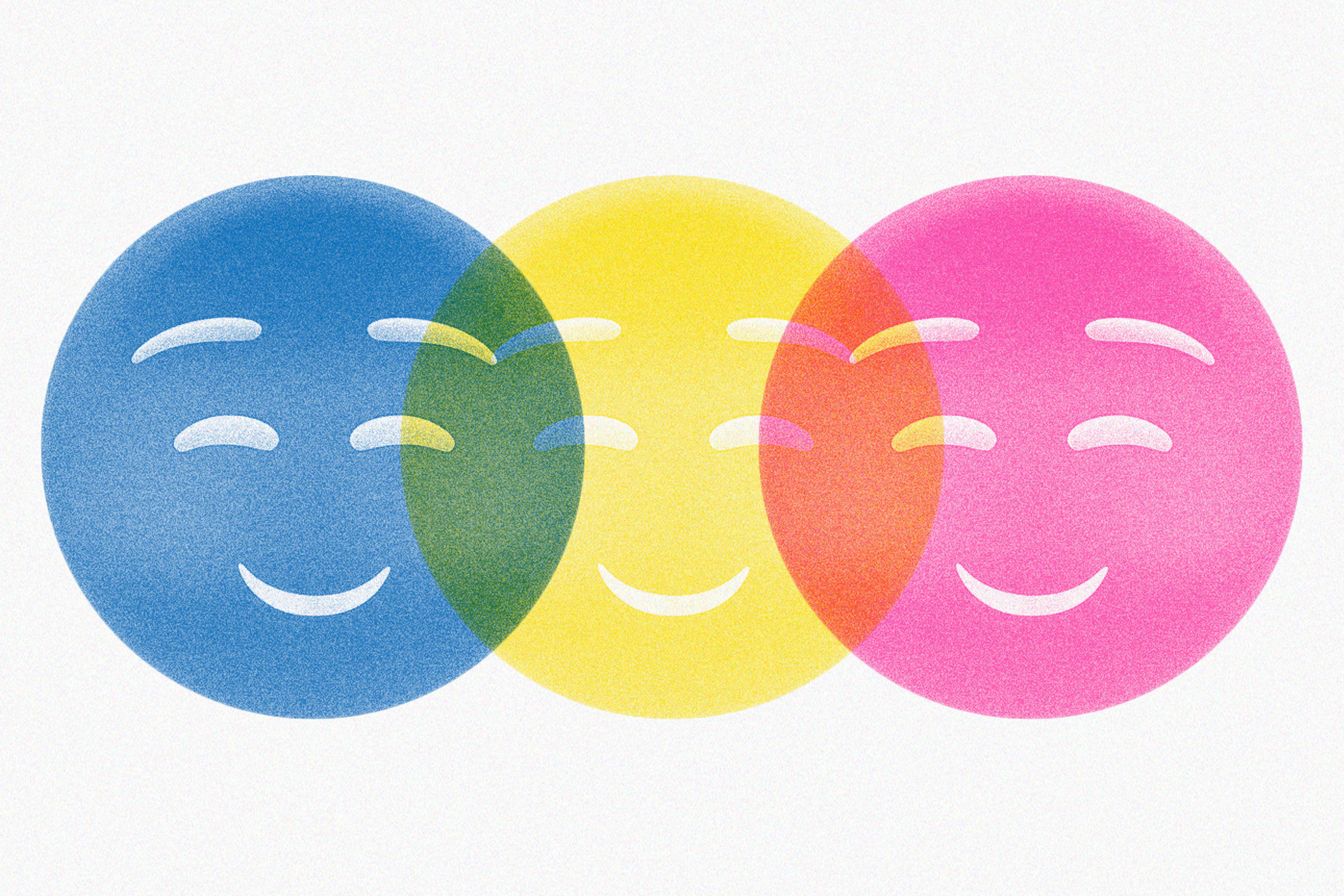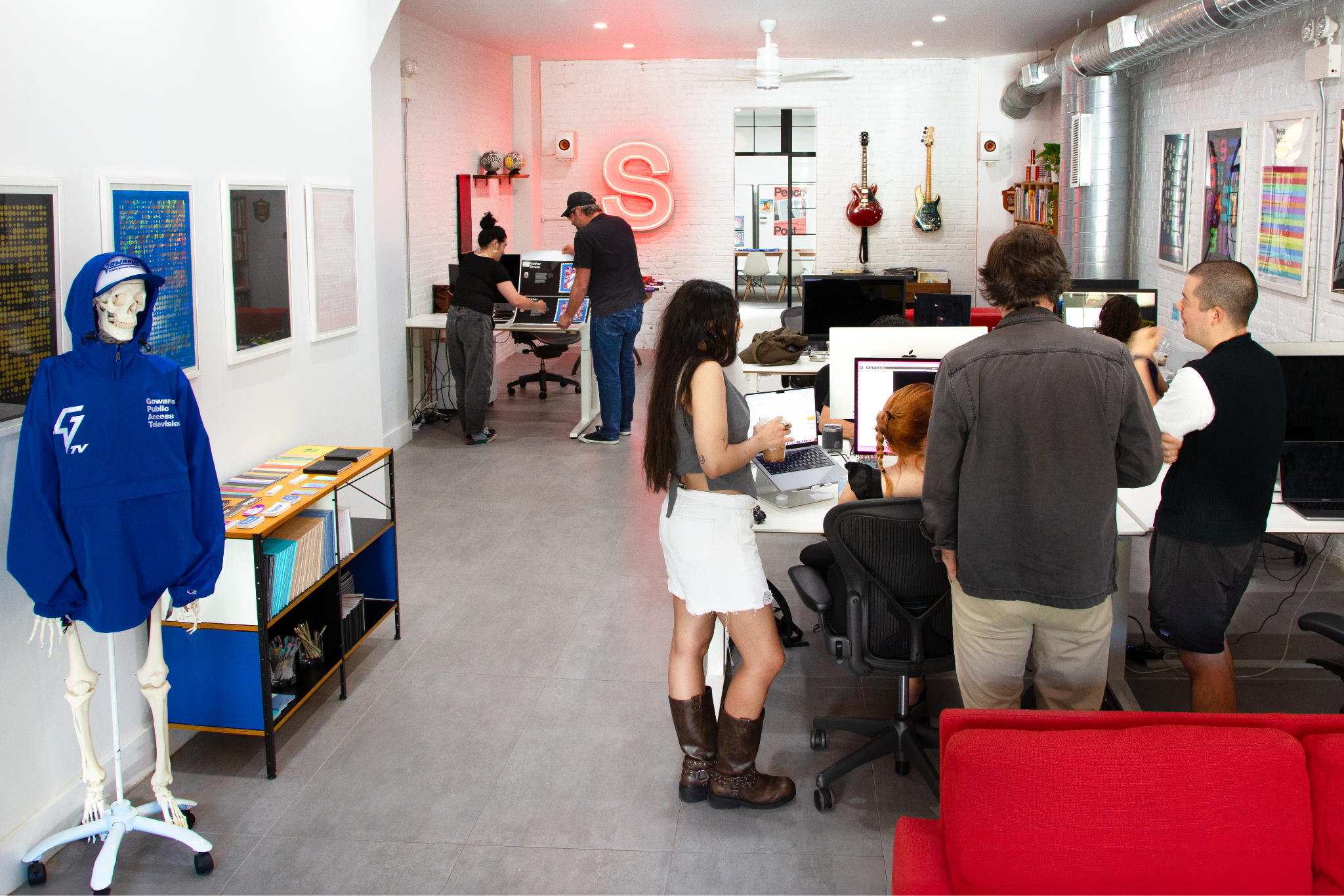
11.20.24
Happy to Help
How a Culture of Helpfulness Creates Happier & Healthier Workplace
We are designers. We are solutions-oriented, and our job is to help.
We help guide your eye, help you find your way, help folks sell their ideas and their products, help make it easier to make a decision, help make it a delightful experience, help make it beautiful, help make it clear, and help make it make sense.
So naturally, as professional helpers, our team is inclined to look for ways to help each other while working together. We offer to hold the door, grab a coffee, take out the trash, make a space look nicer than we found, offer considerate feedback, find solutions to unrealized problems, and raise our hands when projects need volunteers. We look for ways to help without being asked.
We are also a very happy crew! It turns out that this culture of helpfulness is a huge driver of our happiness, which is backed by science.
The Science of Helpfulness & Happiness
Helping others is deeply rooted in our biology. Acts of kindness, whether lending a hand with a project or simply saying "thank you," can trigger the release of neurotransmitters and hormones that boost mood and well-being. Serotonin, dopamine, and endorphins are among these chemicals, playing crucial roles in making us feel content and satisfied and even alleviating pain. This neurochemical boost elevates mood, increases empathy, and encourages more prosocial behaviors like helping colleagues.
Research supports this connection. For example, a University of Warwick study found that happiness led to a 12% increase in productivity. This boost in productivity is partly due to happy employees being more willing to collaborate and assist others. When people feel good, they are more inclined to spread that positivity through helpful actions, creating a supportive and collaborative work environment.
Creating a culture of helpfulness at work is not just about improving productivity—it's about nurturing a happier, more engaged team. Employees actively supporting one another foster a positive environment that enhances well-being and job satisfaction.
You might be saying: thanks, Meg, that’s neat…but how?!
How fostering helpfulness can lead to a happier, healthier team:
- Improving Social Networks:
When employees help each other, it strengthens relationships and builds a supportive community. This camaraderie enhances communication and collaboration, making the workplace more cohesive and resilient. - Encouraging Physical Activity:
Helping colleagues often involves physical tasks, which can encourage movement and reduce the sedentary nature of many office jobs. Physical activity, like walking over to someone else’s desk for a brainstorm, even in small doses, boosts mood and energy levels. - Boosting Self-Esteem:
Acts of kindness, like giving shout-outs in team meetings, can improve self-worth and confidence. When employees feel valued and capable of contributing positively to their peers, their self-esteem grows. - Distracting from Personal Problems:
Helping others can provide a healthy distraction from personal issues, reducing stress and anxiety. This focus on positive actions can shift attention away from worries, fostering a more optimistic outlook. - Creating a Pleasant Community:
A workplace where helpfulness is the norm becomes a more pleasant and inviting place to be. This positive atmosphere can reduce turnover rates and attract talent who value a supportive work environment. Some of our team members have been at the studio for over ten years!

Now that we've seen how helpfulness boosts happiness and well-being at work let's look at some simple ways to make it a regular part of your team culture. These practical steps can help turn helpfulness into a habit that everyone benefits from.
Practical Steps to Foster Helpfulness:
- Lead by Example:
Leaders should model helpful behaviors and commit to prioritizing kindness and support. This sets a tone of mutual assistance and respect throughout the organization and creates an environment where everyone thrives. - Encourage Open Communication:
Create an environment where employees feel comfortable asking for help and offering it. Open communication channels can break down barriers and promote a culture of teamwork. We have an anonymous feedback link, so even the trickiest topics have a safe space to be shared. - Recognize and Reward Helpfulness:
Acknowledge and celebrate acts of kindness within the team. Recognition can be as simple as a thank-you note or as formal as an award, but it should consistently highlight the importance of helpful behaviors. Each month, we nominate a team member for an MVP award. - Provide Opportunities for Team Building:
Organize activities and projects that require collaboration and mutual support. These experiences can strengthen bonds and reinforce the value of helping one another. - Integrate Helpfulness into Company Values:
Make helpfulness a core part of your company's mission and values. When employees know that supporting one another is a key expectation, it becomes a natural part of the workplace environment. Our studio’s motto: Be massively helpful.
The Happiness Connection
As helpfulness becomes ingrained in workplace culture, the benefits for employee happiness are undeniable. Positive neurotransmitters, more robust social bonds, higher self-esteem, and a more enjoyable work environment all contribute to a happier, more fulfilled team. It’s not just about feeling good—helpfulness is a transformative force that shapes behaviors and strengthens team dynamics.
Curious to learn more about how our studio embraced this approach? I’m happy to help! 😊 → megan@selman.nyc

